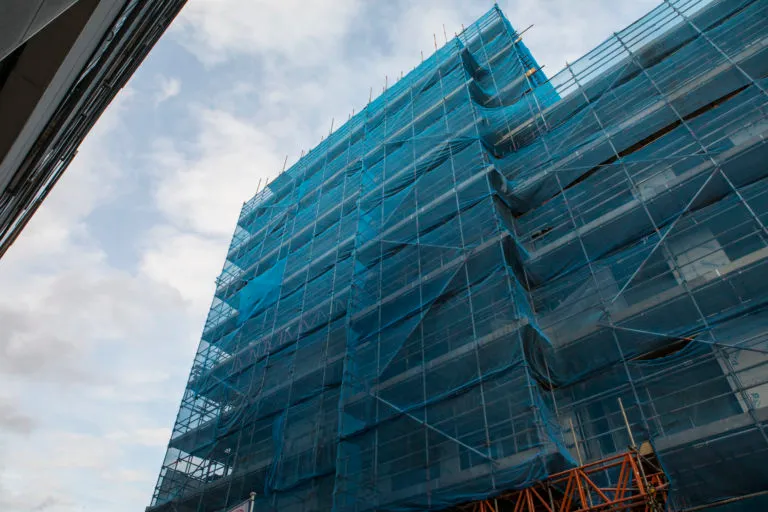Government doesn’t know how zonal planning will affect housebuilding
Published: by John Bibby

As we wait for the full details of the new zonal planning proposals to be announced, we already know one thing about them. The government doesn’t know what impact they will have on housebuilding.
New information obtained by Shelter under the Freedom of Information Act shows that the government hasn’t assessed what impact introducing a zonal planning system will have on housebuilding. And it doesn’t know how long it will take to introduce the new system either.
Recent research for us by Savills shows that there’s every reason to be concerned about a slowdown in housebuilding and job losses in the construction sector as a result of the pandemic. But while investment in social housing is the tried and tested way of countercyclically supporting housebuilding in a downturn, wholesale planning reform will be a jump into the dark – and there are reasons to worry about whether it could even lead to a reduction in social housebuilding through lost Section 106 affordable housing obligations.
A three-tiered zonal system
What we know about the new system we’ve so far gleaned from the newspapers. In an article in the Sunday Telegraph, proposals were set out for a new zonal planning system with three different types of zone:
- Growth – where ‘new homes, hospitals, schools, shops and offices will be allowed automatically’ i.e. without going through the planning process
- Renewal – where permission in principle will be given, but building new homes will still require detailed planning permission
- Protect – areas of ‘Green Belt, Areas of Outstanding Natural Beauty and rich heritage’
The government says it hopes these changes will make the planning process simpler and thereby ‘get Britain building’ and help the economic recovery.
With our recent research showing that hundreds of thousands of new homes could be lost and pathetic numbers of social homes delivered in the economic slowdown, it’s clear that housebuilding needs support.
What’s unclear is whether introducing a zonal planning system will deliver the support housebuilding – and particularly social housebuilding – needs.
No assessment of the impact on housebuilding
Some zonal planning systems are notorious for actually making development more bureaucratic. The time it could take to implement could also be a period of major uncertainty adding further drags on housebuilding at a critical moment. Indeed, some builders may already be thinking about whether to ‘wait and see’.
And previous attempts to increase developers’ power to build outside the planning process, like permitted development rights, have made the system more complex and led to the construction of poor quality, slum-like housing and a loss of social housing.
So when the introduction of a new zonal planning system was being mooted earlier in the year we asked the Ministry for Housing under the Freedom of Information Act for what assessment had been made of its potential impact on housebuilding and how long it would take to introduce.
The response revealed that the government doesn’t know whether introducing a zonal system will speed up development at all:
…the information you requested is not held by the Ministry of Housing, Communities and Local Government. We have undertaken work to look at various international planning systems but have not carried out any assessments falling within the scope of the request.
Cause for concern for social housebuilding**?**
Increasing investment in social housing is the tried and tested countercyclical policy that governments have used to support housebuilding in past recessions. There is also a pressing need to build more social homes to tackle the country’s huge shortage. Doing this will require more investment, which in recent years has fallen to historic lows
So perhaps the most worrying thing, and the biggest unanswered question about the proposed new zonal planning system is the impact it could have on social housebuilding itself.
The historic cuts to investment in new social homes have made the existing planning system the main way that new social housing is delivered. Ten times as many new social rent homes were delivered through so-called ‘Section 106’ affordable housing obligations in the most recent year’s stats as through government investment.
These Section 106 obligations are only added to planning permissions at the time they’re granted. So, if lots of new development is to take place in ‘growth zones’ without going through the planning system, there will be no opportunity to require social housing onsite through Section 106. This could potentially scale-up one of the problems we’ve already seen through existing permitted development rights.
Reform and investment
We have long argued for improvements to the housebuilding system in England. There are major problems with the way the land market functions at present, which slow down housebuilding and lead to fewer new social homes being built than are needed while landing big developers with eye-watering profits.
Many of those problems were highlighted by the Letwin Review of build out, which identified high prices and low market absorption rates as the critical reason housebuilders don’t build faster.
But tackling those problems and keeping housebuilding afloat through the recession will require more proactivity and investment, not a more hands-off, one-size-fits-all approach.
And critically, when the country has a desperate shortage of social housing, dramatically increasing new social housebuilding must be at the centre of the government’s plans, not potential collateral damage.